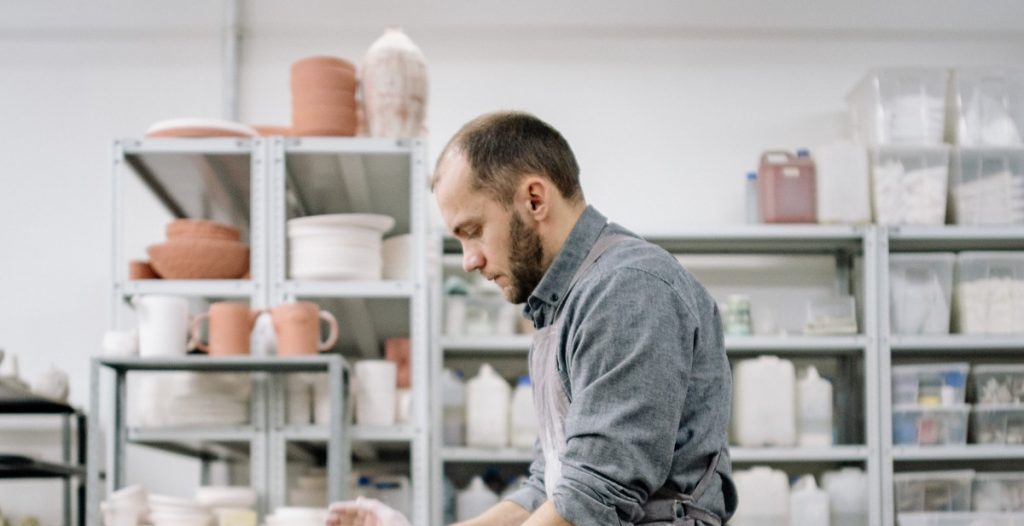The Rise of Candle-Making in Colonial America and the Role of Candles in Everyday Life
Candle-making was an essential trade in colonial America, and it played a significant role in the everyday life of the colonists. Candles were used for lighting, heating, cooking, and even as a form of currency. The early settlers of America had to rely on candles as their primary source of light because electricity was not yet invented. The production of candles was a labor-intensive process, and it required a lot of skill and knowledge to make them.
As the colonies grew and developed, so did the candle-making industry. The demand for candles increased, and new methods of production were developed. The use of tallow, a by-product of the meat industry, was the primary ingredient in candle-making until the introduction of beeswax and bayberry wax. Beeswax and bayberry wax were more expensive than tallow, but they produced a cleaner and brighter light, making them popular among the wealthy.
Candles were not only used for lighting, but they also played a crucial role in the social and economic life of the colonies. They were used as a form of currency, and they were often exchanged for goods and services. Candles were also used in religious ceremonies and as a symbol of status and wealth.
This article will explore the rise of candle-making in colonial America and the role of candles in everyday life. It will examine the different types of candles, the methods of production, and the social and economic significance of candles in colonial America.

The History of Candle-Making in Colonial America
Candle-making was an essential activity in colonial America. It was a time when electricity was not yet available, and people relied on candles for lighting their homes, businesses, and public places. The history of candle-making in colonial America can be divided into three periods: Early Colonial Period, Middle Colonial Period, and Late Colonial Period.
Early Colonial Period
The Early Colonial Period was characterized by the use of tallow candles. Tallow is a byproduct of animal fat, usually derived from cows or sheep. The candles made from tallow were cheap and readily available, but they had a strong odor and produced a lot of smoke. This made them unpopular among the colonists, who preferred beeswax candles imported from England. However, beeswax candles were expensive and not affordable for most people.
Middle Colonial Period
The Middle Colonial Period saw the rise of the bayberry candle. Bayberry bushes grew in abundance in the colonies, and the wax extracted from their berries was used to make candles. The process of making bayberry candles was labor-intensive, and it took a lot of berries to produce a small amount of wax. As a result, bayberry candles were expensive and used only on special occasions.
Another development during this period was the use of spermaceti wax. Spermaceti is a waxy substance found in the head of the sperm whale. The colonies imported spermaceti wax from the West Indies, and it was used to make high-quality candles that burned brightly and had a pleasant aroma. However, spermaceti wax was also expensive, and only the wealthy could afford it.
Late Colonial Period
The Late Colonial Period saw the development of new techniques for making candles. The most significant innovation was the production of stearin wax. Stearin is a byproduct of animal fat that is much harder and more durable than tallow. Candles made from stearin wax burned longer and produced less smoke than tallow candles. Stearin wax was also cheaper than beeswax and spermaceti wax, making it affordable for most people.
The Late Colonial Period also saw the rise of the candle-making industry. Many entrepreneurs set up candle-making factories, and the production of candles became more efficient and cost-effective. The candle-making industry was an essential part of the colonial economy, and it provided employment for many people.
| Period | Materials Used | Developments |
|---|---|---|
| Early Colonial Period | Tallow | Importation of Beeswax Candles |
| Middle Colonial Period | Bayberry Wax, Spermaceti Wax | Development of Candle-Making Techniques |
| Late Colonial Period | Stearin Wax | Rise of Candle-Making Industry |

The Role of Candles in Everyday Life
Candles have been a part of human life for centuries. They are a source of light, warmth, and comfort, and have played a significant role in shaping human civilization. In colonial America, candles were one of the most important household items, and their production was a thriving industry. Candles were used for a variety of purposes, including lighting, cooking, religion, and entertainment.
Lighting
Candles were primarily used for lighting in colonial America. They were an essential source of light, especially during the long winter nights when daylight was scarce. Candles were used in every room of the house and were often the only source of light after dark. They were also used during power outages, which were common in those days.
Cooking
Candles were also used for cooking in colonial America. Since there was no electricity, people had to rely on other sources of heat for cooking. Candles provided a small but steady flame that was perfect for warming up food, heating water, and melting wax for sealing jars.
Religion
Candles played an important role in religious ceremonies in colonial America. They were used in churches, homes, and other places of worship. Candles were often lit to commemorate special occasions, such as Christmas and Easter, and were an essential part of the religious rituals of the time.
Entertainment
Candles were also used for entertainment in colonial America. They were used to create a romantic atmosphere during dinners and gatherings. They were also used for storytelling, as people gathered around the candlelight to listen to tales of adventure and mystery.
| Use | Description |
|---|---|
| Lighting | Candles were used as the primary source of light in colonial America, especially during the long winter nights. |
| Cooking | Candles were used for cooking, heating water, and melting wax for sealing jars. |
| Religion | Candles were used in religious ceremonies to commemorate special occasions and as an essential part of religious rituals. |
| Entertainment | Candles were used to create a romantic atmosphere during dinners and gatherings and for storytelling. |
Candles have come a long way since colonial America, but their importance in everyday life has not diminished. Today, candles are still used for lighting, decoration, and relaxation. They continue to be an essential part of human life and will likely remain so for centuries to come.

The Rise of Candle-Making in Colonial America
In colonial America, candles were a crucial part of everyday life. They provided light in the dark, warmth in the cold, and a way to keep time. The growth of the candle-making industry was a significant development during this time, as it allowed for the mass production of candles and made them more affordable for the average person.
The Growth of the Candle-Making Industry
The candle-making industry in colonial America began to grow rapidly in the mid-1700s. This was due in part to the increasing demand for candles, as more people began to settle in the colonies and needed a reliable source of light. The industry was also fueled by advances in technology, such as the invention of the first automated candle-making machine in 1834.
Candle-making was a profitable business, and many people took advantage of the opportunity to start their own candle-making operations. In fact, some of the most successful candle makers of the time were women who ran their own businesses from home.
The Importance of Raw Materials
The raw materials used in candle-making were essential to the industry’s growth and success. Tallow, which is a byproduct of the meat industry, was the most common material used to make candles. However, beeswax and bayberry wax were also used, although they were more expensive.
The quality of the raw materials used in candle-making was crucial to the quality of the finished product. For example, tallow from older animals was often of poorer quality and resulted in candles that burned less brightly and had an unpleasant odor.
The Role of Women in Candle-Making
Women played a significant role in the candle-making industry in colonial America. Many women ran their own candle-making businesses from home, using the profits to support themselves and their families.
Women were also responsible for the production of the raw materials used in candle-making. For example, they often collected and rendered the tallow used to make candles. This work was physically demanding and required a great deal of skill and knowledge.
In conclusion, the rise of candle-making in colonial America was a significant development that had a profound impact on everyday life. The growth of the industry, the importance of raw materials, and the role of women in candle-making all contributed to making candles an essential part of colonial life.

Conclusion
In conclusion, candles played a significant role in the everyday life of colonial America. The rise of candle-making was a crucial development in the early days of the colony, as it provided a reliable source of light to the settlers. Candles were not only used for lighting but also for cooking, heating, and signaling.
As the colonies grew and developed, so did the candle-making industry. The introduction of new technologies and materials allowed for the production of more efficient and longer-lasting candles, which further increased their popularity.
Today, candles continue to be an essential part of our lives, although their use has evolved. They are now primarily used for decoration, relaxation, and aromatherapy. However, the history and significance of candles in colonial America should not be forgotten.
The candle-making industry in colonial America was a testament to the ingenuity and resourcefulness of the settlers. It provided them with a source of light and warmth in a time when these were scarce commodities. The legacy of this industry can still be seen today in the various candle-making techniques and traditions that have been passed down through the generations.
Overall, the rise of candle-making in colonial America played a vital role in the development of the colonies and the shaping of American culture. It is a fascinating chapter in our history that deserves to be remembered and celebrated.



